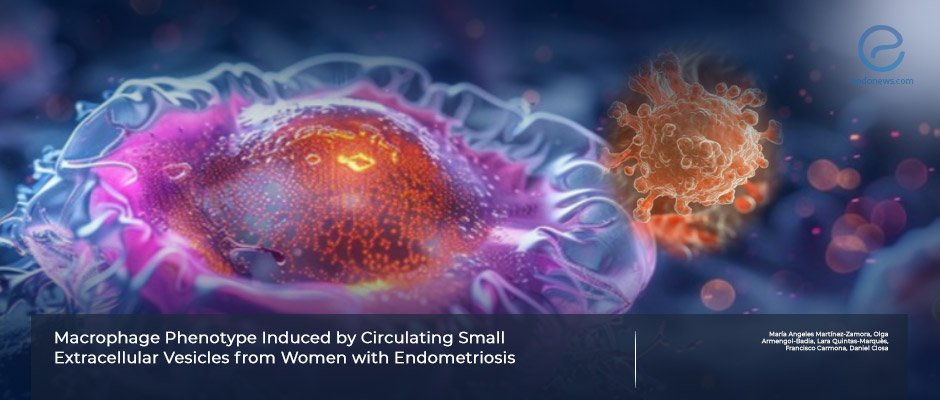Macrophage Phenotypes Induced by Circulating Extracellular Vesicles in Endometriosis
Oct 15, 2024
Small Circulating Vesicles in Endometriosis
Key Points
Highlight
- Circulating small extracellular vesicles (sEVs) from women with endometriosis may influence macrophage polarization toward an M2 phenotype, offering insights into their subtle immunomodulatory role in progression.
Importance
- Circulating sEVs may have a role in endometriosis, potentially aiding disease progression with macrophage activity changings.
- This small molecules may be important point to understand the disease and cellular interactions and differentiations.
What’s done here?
- This prospective designed trial examined 12 women diagnosed with endometriosis confirmed by imaging and histopathology, and 12 healthy controls.
- Blood samples were collected prior to surgery, and sEVs were isolated from the plasma through ultracentrifugation.
- The effects of sEVs on macrophage polarization were evaluated using human THP-1 cells differentiated into macrophages. Protein content and macrophage phenotype markers were assessed.
Key results
- TEven though the impact of circulating sEVs on macrophage polarization is subtle, they still have the capacity to influence the macrophage phenotype.
- sEVs derived from endometriosis patients can contribute to macrophage polarization toward an M2 phenotype, which promotes tissue repair and angiogenesis, factors known to support endometriotic lesion establishment.
- The induction of PPARG by sEVs did not appear to be directly associated with its activation.
Strength and Limitations
- Small sample size and the modest impact of circulating sEVs on macrophage polarization are limitations.
Lay Summary
In a study published in the Biomolecules, Martínez-Zamora et al. investigated the potential effect of circulating sEVs in the plasma of well-characterized patients with endometriosis on macrophage phenotype.
This study explores how sEVs, which are tiny particles found in the blood of women with endometriosis, might influence immune cells called macrophages. These immune cells can adopt different roles, and in endometriosis, they often shift to a type that helps the disease progression. They studied the effects of these sEVs on macrophages, using human THP-1 monocytic cells that were differentiated into macrophages in the lab.
The importance of this study lies in its identification of how circulating sEVs from women with endometriosis can influence macrophage differentiation, shifting them toward an M2 phenotype associated with tissue repair and anti-inflammatory responses. This shift may play a crucial role in the progression of endometriosis by promoting tissue adhesion, growth, and angiogenesis, all of which are key features of the disease. Altough the effects of these small vesicles are subtle but important on macrophage physiology, this study not only provides insights into the immune mechanisms underlying endometriosis but also opens the door for future therapeutic strategies targeting macrophage polarization to potentially modulate disease progression and improve patient outcomes.
In conclusion, the study provides evidence that circulating sEVs in women with endometriosis can induce cellular differentiation which is important step for the disease , which could potentially contribute to the development and progression. However, the effects were relatively small on the signaling pathway level, and further research is needed to explore other potential mechanisms and how this knowledge could be translated into therapies, possibly targeting macrophages to prevent or treat endometriosis.
Research Source: https://pubmed.ncbi.nlm.nih.gov/39062452/
endometriosis small extracellular vesicles macrophages
DISCLAIMER
EndoNews highlights the latest peer-reviewed scientific research and medical literature that focuses on endometriosis. We are unbiased in our summaries of recently-published endometriosis research. EndoNews does not provide medical advice or opinions on the best form of treatment. We highly stress the importance of not using EndoNews as a substitute for seeking an experienced physician.<< Previous Article

